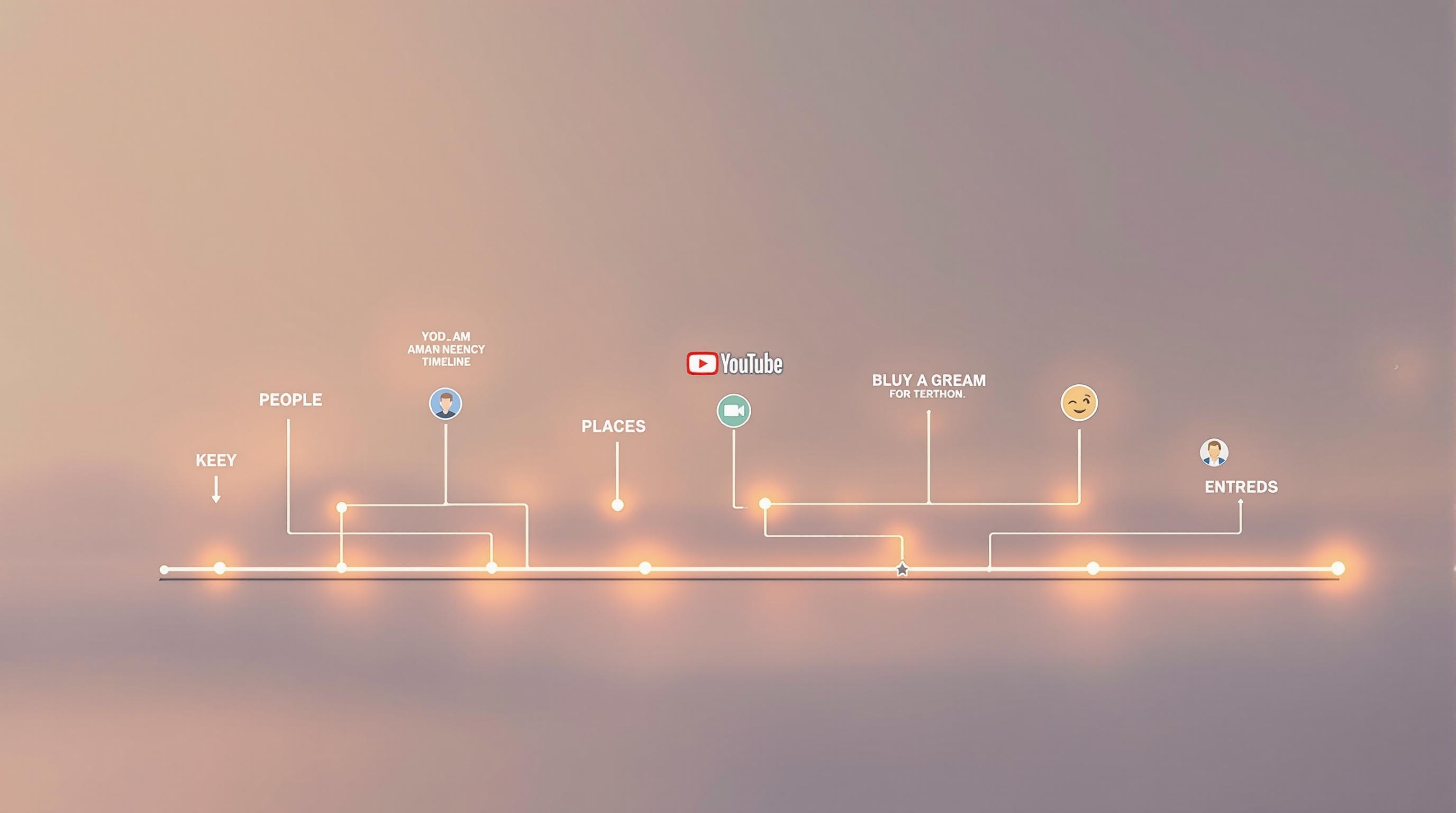Want to make your YouTube videos accessible to global audiences? Multilingual transcription tools are the solution. These tools convert speech into text and translate it into multiple languages, helping creators and businesses reach diverse viewers while improving accessibility and SEO.
Here’s what you need to know:
- Top Tools: Otter.ai, Trint, Sonix, and YouTube’s built-in captions lead the way in 2025.
- Key Features: Real-time transcription, multi-language support, speaker identification, and integration with video editing software.
- Why It Matters: With 3.3 billion people watching 17 hours of video weekly, these tools break language barriers and boost content visibility.
Quick Comparison
| Tool | Languages Supported | Real-time Transcription | Integration Options | Free Plan Available |
|---|---|---|---|---|
| Otter.ai | 40+ | Yes | Zoom, Google Meet, Teams | Yes |
| Trint | 40+ | No | Adobe Premiere Pro | Yes |
| Sonix | 40+ | No | Video editors | Yes |
| YouTube Captions | Limited | No | Built-in | Yes |
These tools make global content creation easier than ever. Start with free options or invest in advanced tools based on your needs.
5 Best Automatic Transcription Software for Multiple Languages
What Are Multilingual YouTube Transcription Tools?
These tools convert spoken video content into text and translate it into multiple languages, making videos accessible to audiences worldwide. Using advanced speech recognition technology, they can handle a variety of accents, dialects, and speaking styles. Many leading tools now support over 120 languages, allowing creators to connect with diverse viewers.
Why Multilingual Transcription Matters
With 3.3 billion people watching an average of 17 hours of video weekly [3], multilingual transcription plays a key role in expanding reach, improving accessibility, boosting SEO, and repurposing content. For YouTube creators, these tools help break language barriers, making content available to a wider audience while also enhancing usability for viewers with hearing impairments.
Many modern transcription tools simplify the process by supporting a wide range of languages, making global content creation more efficient.
Advances in Transcription Technology
Recent developments in AI have dramatically improved transcription accuracy and speed. These advancements have reshaped how creators handle multilingual content:
"Recent advancements in AI and machine learning have significantly improved transcription accuracy, language detection, and processing speed, making complex file transcription more accurate and efficient." [2]
AI-powered tools now offer better speaker identification, real-time transcription, and seamless integration with editing software like Adobe Premiere Pro. This allows creators to streamline their workflow while maintaining a consistent multilingual presence to meet the growing demand for global content.
Let’s dive into the top transcription tools shaping the landscape in 2025.
sbb-itb-26cab57
Best Multilingual YouTube Transcription Tools in 2025
Here’s a look at some of the top tools reshaping multilingual transcription workflows in 2025, perfect for creators and businesses.
YouTube's Built-in Auto-Generated Captions
YouTube’s own transcription tool is a convenient, no-cost option for creators. It’s easy to use and integrated directly into the platform. However, it struggles with non-English content and noisy environments, making it more suitable for basic drafts that need manual adjustments.
Otter.ai

Otter.ai is known for its advanced AI transcription capabilities. It offers a range of useful features:
| Feature | Details |
|---|---|
| Free Plan | 600 minutes of transcription per month |
| Language Support | Supports multiple languages with real-time translation |
| Key Features | Speaker identification, custom vocabulary |
| Integration | Works with Zoom, Google Meet, and Microsoft Teams |
Its AI gets smarter with use, making it a great option for creators who transcribe regularly.
Riverside

Riverside simplifies the process by integrating with major platforms, making it easy to go from recording to publishing. It’s particularly good at handling diverse accents and dialects, which makes it a strong choice for international projects.
Podcastle

Podcastle provides 3 hours of free transcription monthly and includes advanced editing tools with timestamps. It’s designed for ease of use and accurate results. Key features include:
- Tools for editing with synchronized timestamps
- Custom vocabulary options
- Multi-speaker detection and labeling
Video Summarizer Directory
The Video Summarizer Directory is a helpful resource for comparing transcription tools. It allows users to evaluate tools based on various criteria:
| Comparison Criteria | Details |
|---|---|
| Pricing Models | Free plans, subscriptions, pay-per-use |
| Language Support | Range of supported languages |
| Integration Options | Platforms and software compatibility |
| Special Features | AI tools, editing features, export formats |
Up next, we’ll dive into a side-by-side comparison of these tools to help you choose the best one for your needs.
Comparing Transcription Tools
What to Look For in a Transcription Tool
When choosing a transcription tool, focus on factors like accuracy, language options, and how well it works with editing platforms. Features such as speaker identification and timestamps can make the process smoother. Thanks to advancements in AI, modern tools now deliver better precision and support for a wider range of languages, catering to global users.
Comparison Table of Tools
Here's a comparison of some of the top transcription tools in 2025:
| Feature | Google Speech-to-Text | Otter.ai | Trint | Sonix |
|---|---|---|---|---|
| Accuracy Rate | 95%+ | 90-95% | 95%+ | 95%+ |
| Languages Supported | 120+ | 40+ | 40+ | 40+ |
| Real-time Transcription | Yes | Yes | No | No |
| Collaboration Features | Limited | Advanced | Advanced | Basic |
| Video Editor Integration | Yes | Limited | Yes | Yes |
| Custom Vocabulary | Yes | Yes | Yes | Yes |
| Free Trial Available | Yes | Yes | Yes | Yes |
This table highlights the core features, helping you identify which tool suits your needs.
How Creators and Businesses Use These Tools
Transcription tools are more than just aids for subtitling - they’re essential for content creation and global communication. With 91.8% of internet users watching videos weekly [3], these tools have become vital for creators and businesses alike.
- Global Content Strategy: Tools like Trint and Sonix are popular for their ability to handle real-time transcription and translation, simplifying workflows across multiple languages.
- Improved Accessibility: Companies pair transcription tools with video editors like Adobe Premiere Pro to produce accurate subtitles, making content accessible to a broader audience.
- Boosting Searchability: Multilingual transcripts help businesses improve their content's visibility in search engines, reaching diverse markets.
- Maintaining Quality: While AI tools are efficient, professional creators often involve human editors to refine transcripts, ensuring cultural nuances and context are preserved.
To choose the right tool, think about:
- The volume of content and specific language requirements
- How well it integrates with your current tools
- Balancing costs with the features you actually need
Selecting a transcription tool that aligns with your workflow and content goals is crucial for maintaining high-quality results across languages.
Conclusion and Advice
Key Takeaways
The world of multilingual YouTube transcription has seen major progress by 2025. AI-powered tools now deliver impressive accuracy and support for a wide range of languages. These advancements are reshaping how creators and businesses handle global content, making workflows smoother and improving accessibility [1].
What’s more, the merging of transcription tools with video editing platforms has made it easier than ever to produce and manage multilingual content for different audiences [2].
However, with so many tools available, it’s important to choose one that fits your specific needs.
How to Pick the Best Tool
Modern transcription tools, like Otter.ai and Trint, can make a big difference in how you manage content. Here’s how to ensure you’re choosing the right one:
Understand Your Needs
- Check if it supports the languages you’re targeting.
- Make sure it works seamlessly with your video editing software.
- Look for a balance between automation and manual editing options.
Plan Your Budget
Start with free options like YouTube’s built-in captions. If you need advanced features, consider investing in professional tools like Trint [1][2].
Focus on Quality Control
A solid review process ensures accurate and culturally relevant transcriptions:
- Use AI tools for the first draft.
- Double-check technical terms and specialized content.
- Confirm the content aligns with cultural nuances and localization needs.
- Have native speakers review the final version for added accuracy.
The right tool should improve your workflow while ensuring your content is accurate, efficient, and ready for a global audience.


